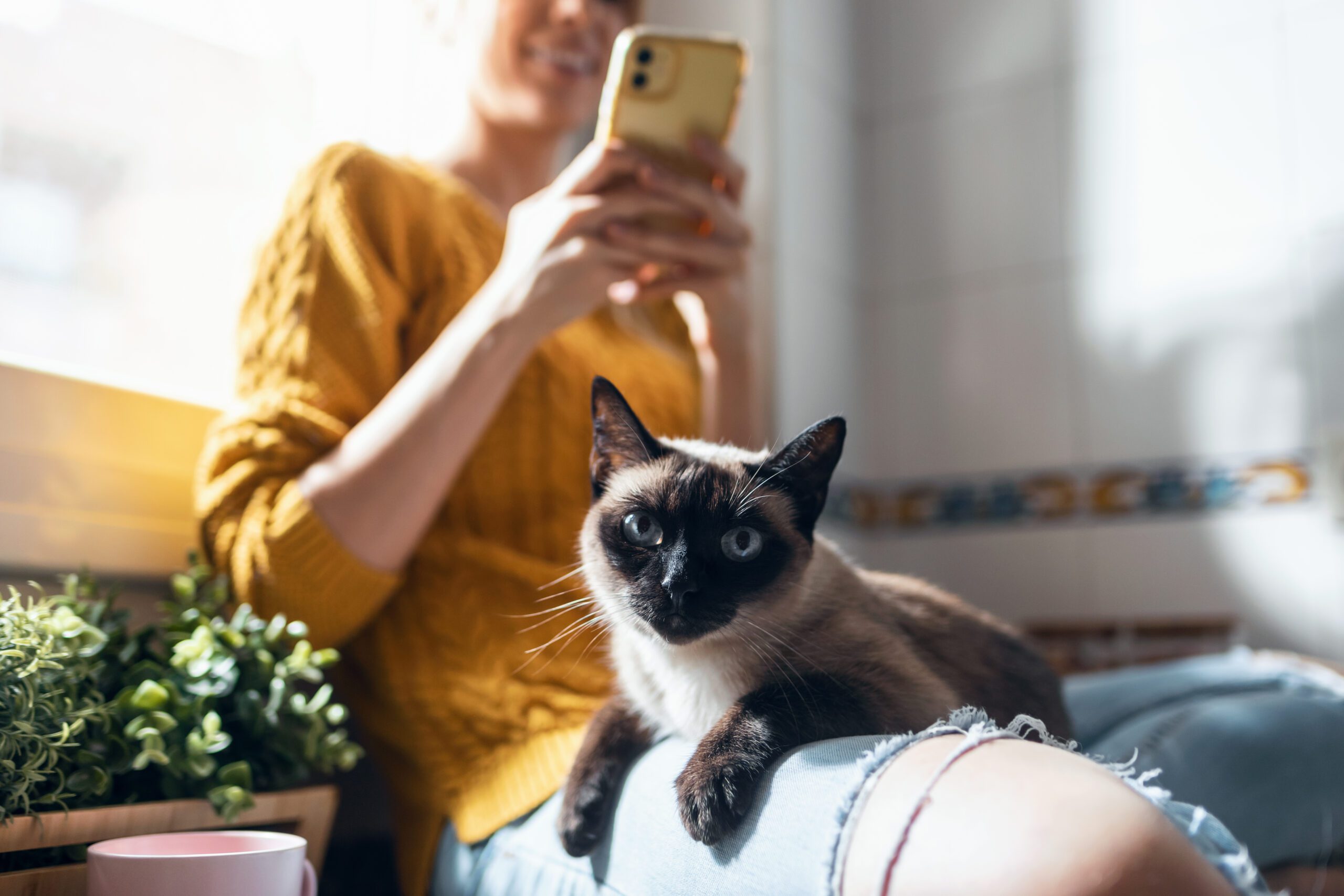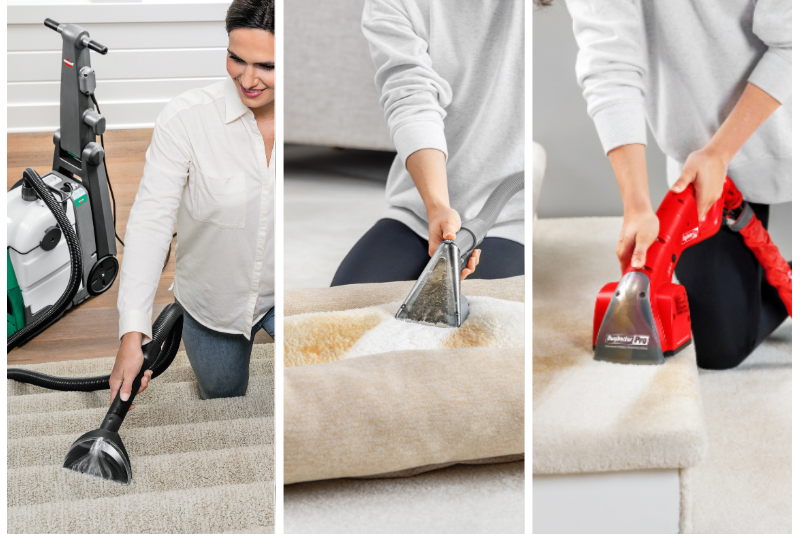The Science of Stains: How to Keep Your Cat from Urinating Outside the Litterbox

Sharing your heart and home with a feline family member brings you heaps of amusement, comfort, and joy. Of course, sometimes, life with your four-legged friends also brings you a mess. Whether they’re pushing coffee off the counter or digging through the dirt in your houseplants, your curious cat can cause quite the catastrophe.
At some point in their lives, 10% of cats will urinate outside of the litter box. It’s concerning when a member of your furry family starts acting differently, not to mention frustrating when that new behavior leaves behind both a mess and an odor. Thankfully, cleaning up doesn’t have to be an uphill battle. Armed with information about the science behind the stains and some insight into your furry friend’s behavior, you can bounce back from life’s little messes and focus on what matters.
Why Do Cats Urinate Outside of the Litter Box?
To get to the bottom of Kitty’s new behavior, you’ll need to take a closer look at her actions. Urinating outside of the litter box is not the same as urine marking; while the difference may seem subtle, knowing what each deed looks like can help to identify the cause as well as the solution.
Cat urinating outside litter box
If your cat is urinating outside of the litter box, you will notice that he is not using the litter box at all or is using it infrequently. Instead, he will empty his bladder outside of the box and may defecate outside of the litter box, as well. If you have multiple cats, you may need to keep them separated or observe them for a time to determine which cat is having a problem.
Marking outside litter box
When a cat is marking an area with her urine, she will typically continue to use the litter box. Additionally, however, she will mark surfaces with a smaller volume of urine. Marks generally are, but not always, on vertical surfaces and, if you catch your cat in the act, you will notice her raise her tail and back up before spraying. Urine marking isn’t about urination but, rather, about communication.
How To Remove Urine Stains
Once your cat has urinated outside of his litter box, no matter the reason, he may make it a habit long after the cause is uncovered and resolved. You don’t need to wait to figure out why the behavior began to start preventing its return, however. In fact, the best way to avoid re-soiling is to remove the urine stain and scent as soon as possible.
What kind of cleaner should you use for pet stains?
Your cat’s sense of smell is more than ten times stronger than yours, and if she can smell the scent of urine, she’s more likely to urinate in that same spot again. Passing your fastidious feline’s sniff test is a breeze, however, when you have the right cleaner for the job.
An enzyme-action solution is the best way to help eliminate both stains and odors that all-purpose cleaners can leave behind. The enzymes work hard, so you don’t have to, breaking down or digesting not just the stain itself but the odor-causing molecules, as well.
How to Remove Fresh Urine Stains:
Blot Liquids
Gently blot liquids with paper towels or a clean, absorbent cloth. A light touch is essential to extracting as much of the urine as possible without pushing it further into the fibers and padding.
Saturate Area with Cleaner
Saturate the area to be cleaned with an enzymatic cleaner. We recommend Urine Eliminator Pre-Treat & Spot Cleaner which is designed to tackle even the toughest cat urine stains and odors.
Let the product sit
Allow the product to sit for 5-10 minutes while it penetrates the stain and the enzymes work to break down stains and odors. For best results, cover the area with a damp a moist towel and allow the enzymes to work for up to 24 hours.
Blot stain with cloth
Using a clean, color-safe cloth, blot the area again to extract the stain and as much liquid as possible.
Stay off the stain until dried
You and other two- and four-legged members of your family should stay off the treated area until it has dried and been vacuumed. If you’re using a pet stain remover for the first time, test a small spot for colorfastness, observing it after its dry to determine if the color is affected.
It’s always best to clean up pet accidents as soon after they occur as possible. Once a urine stain has set, it may cause a loss of pigment or yellowing of the fabric.
Prevent Future Marking and Litter Box Mishaps
To prevent future urination outside of the litter box, you’ll need to identify and treat the cause in addition to erasing the stains and odors left by past accidents.
How to stop your cat from urinating outside of the litter box
Cats may do their business outside of the litter box due to medical or social reasons. Your veterinarian should examine your cat to identify or rule out medical causes, such as urinary tract infections, kidney problems, stress, or other issues. If a medical problem doesn’t explain the behavior, it may be a social or environmental issue. Here are a few to consider:
- Do you have enough litter boxes? Multiple cats require multiple litter boxes, at least one per cat.
- Is your litter box clean and accessible? Felines are known for being fastidiously clean, and this extends to their litter boxes. If a litter box isn’t cleaned to your cat’s standards, she may refuse to use it. Similarly, if it is in a difficult to reach place or she can’t comfortably use it due to its size or other features, she may refuse to use it.
- Have you switched litter? Cats are particular animals, and their preferences may include their litter. While a switch to 1-ply might not seem like cause for a bathroom boycott to you, your cat may feel otherwise and continue the strike until her preferred conditions are restored.
Understanding your cat’s marking behavior
If your cat is engaging in urine marking behaviors, he’s trying to send a message. In nature, adult cats are solitary animals with an indirect communication style. Unlike pack animals, the feline communication system is more akin to leaving notes around their territory for others to find.
A cat who is marking in the house has something to say. As with urinating outside of the litter box, you should consult your veterinarian to rule out a medical cause. While marking itself is not a medical condition, if your cat is sick or uncomfortable, he may develop anxiety which can lead to marking. He may also be responding to animals he sees through windows and doors, or other pets in the home that he views as a threat or competition. Blocking his view or adding litter boxes and perching areas can help him to claim his own space without spraying.
Eliminate old cat urine stains and odors
While finding and eliminating the cause of your cat’s behavior may take some trial and error, removing the stains and odors should start immediately. Once your cat no longer has a reason to urinate outside of her litter box, she may still develop a preference for the new location if the scent has not been eradicated.
Cleaning your carpet with the wrong tools or solutions often leads to phantom smells that come back to haunt you and could cause the hallmark of old pet urine stains: bleaching. Once your carpet or fabric is bleached by urine, a thorough cleaning can remove the remaining traces of odor but won’t be able to correct the color. If you’re dealing with a set in stain, you may need to saturate it with an enzyme cleaner and allow it to sit for 24-48 hours for the enzymes to fully reach the source of the stain.
What to do if the stain is lingering
If your nose tells you that a stain is lingering, but your eyes can’t find it, a blacklight can help you see what you could only smell before and get your home back to feeling its freshest. Note that even after the mess is cleaned, it will likely still be visible by blacklight, but the tone will have changed.
Find a Rental Location Near You Today to Clean Your Carpet Stains
Cleaning carpet stains, including those that have resisted other cleaners in the past, is best done by a professional grade carpet cleaner rental machine. Our rental carpet deep cleaner can help you get professional, fast-drying results that erase everyday messes and pet accidents alike. If you’re facing down particularly tough stains or difficult to reach spots, the upholstery handheld tool can be added to your rental so you can get every cozy corner cleaned up in a cinch. Not sure how to use a carpet cleaner? It’s easy! We have a step-by-step guide to walk you through the process.
Find a Rug Doctor® by BISSELL® carpet deep cleaner at pet specialty, grocery and home improvement stores. Click here to find one near you.
Have a dog? Click here to learn HOW TO GET RID OF DOG URINE STAINS AND PUT A STOP TO RE-MARKING.


